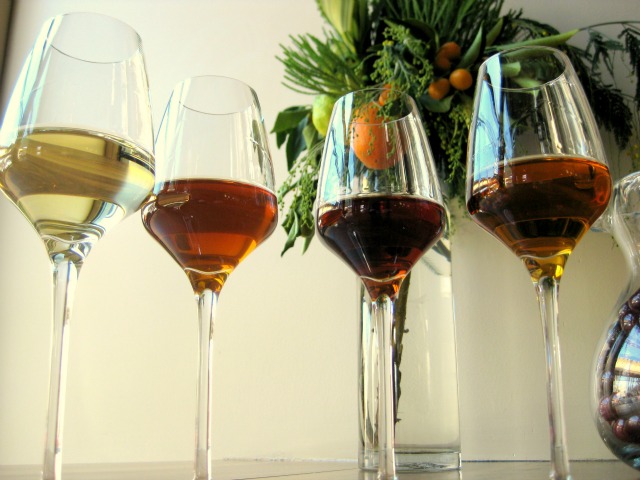Off The Clock: Chicago-Style Hot Dogs And The Task Of The Amontillado
By Erin Drain in Food on May 3, 2013 6:00PM

Elizabeth and Mark Mendez own a restaurant that you probably should have visited by now. In case you haven't, it's called Vera. As a self-described "home for esoteric wines from familiar places," and also "familiar wines from unfamiliar places," Vera is a pretension-free haven in the West Loop for Spanish small plates (called "tapas" or "pintxos"), and it has an excellent wine list that spans the globe. Reflective of the binary system of "old Spain" and "new Spain," the food menu, says wine director Ms. Mendez, offers both traditional dishes (like patatas bravas) and modern ones (uni toast, anyone?). So of course, we asked her to pair some of her unique wines with... a Chicago-style hot dog.
Spanish food is exciting, because, if you follow Liz's line of thought, you get two cuisines in one; high and low, old and new, inward- and outward-looking. That's why she has developed an extensive sherry program at Vera; for her, these old-school wines encapsulate everything great about Spain's cuisine: a marriage of affordability and tradition, but also an array of intense and sometimes surprising flavors. She stresses that sherry is wine, albeit made with a couple extra steps, and also that "there's so much sherry that isn't sweet," which is a common misconception. Sherry's many styles - dry fino ("like a flat brut Champagne), nutty oloroso, chameleon-like amontillado, tangy and green apple-y manzanilla, thick and sweet Pedro Ximenez - mean that the category can carry a diner "from the beginning to the end of a meal." Even, perhaps, after the meal is finished and its server is looking for a quick bite after punching out.
It was obvious, given Liz's love affair with sherry, where she would look to for this edition of the Off the Clock food pairing challenge. For what is the best example of Chicago's high-low food dichotomy than the classic Chicago-style hot dog? Satisfying and hearty, yet inexpensive, the Chicago hot dog is a food that can form a whole meal for just a couple bucks, and satisfy the cravings of a server after a long shift. Portable, easy to find, quick, and delicious - all of the ramifications for the tapas that one would eat standing up in a bar in Madrid, for instance.
What's the method behind her pairing madness? Mendez notes that when Iberico ham first became legal in the US, her purveyor came around with samples and served them with a dry sherry, at 9 a.m. One mouthful of the salty ham with the bracing wine, and she was hooked. And so when we proposed the hot dog, her first thought was of the salty, briny, "hamminess" of the dog itself.
The confounding factors with the pairing are the toppings — sweet relish, tangy tomato, celery salt, and more — and that's why Liz reaches for a more complex Amontillado sherry like the El Maestro Sierra ($10/glass). As a style, these sherries start their lives as fino (meaning they're protected by a layer of yeast that prevent oxidation) and then eventually the yeast dies, exposing the wine to air and thus oxidizing, which adds a darker color and a rich, slightly nutty character that make it complex enough to stand up to all those ingredients on a Chicago dog.
In Spain, they are historically served with savory dishes like rabbit, and definitely fall under the "old Spain" register; the El Maestro is aged for twelve years,and another Amontillado on her list, the Bodegas Tradicion ($12/glass) is aged for at least thirty. Try finding a "vintage" red wine of that quality for such an accessible price. It's impossible. If sherry is a "perfect wine," then the hot dog, a complete meal between the starch, meat, and its bevvy of vegetables, is a perfect meal. A little slice of Spain in the midwest, perhaps where it's least expected.
Vera is at 1023 West Lake Street.